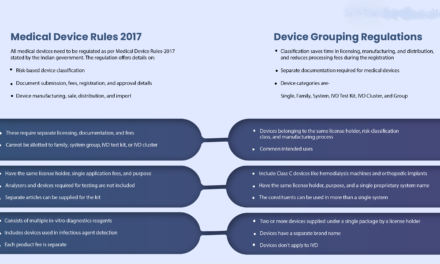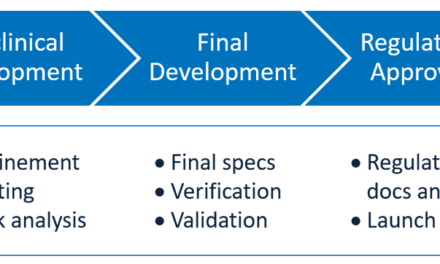
How does India’s medical devices market play a major role?

India’s medical devices market plays a significant role in shaping the global healthcare landscape due to its growing size, diverse product offerings, cost-effectiveness, and innovative potential. Here’s an analysis of the major ways India’s medical devices market contributes:
1. Growing Market Size:
- Rapid Expansion:
- The Indian medical devices market is projected to grow at a compound annual growth rate (CAGR) of 15-20%, reaching approximately $50 billion by 2030.
- Global Market Share:
- Although India currently contributes about 1.5% to the global medical devices market, its growth potential positions it as a significant player on the international stage.
2. Affordable and Quality Products:
- Cost-Effectiveness:
- India produces high-quality medical devices at competitive prices, making it an attractive supplier for both developed and emerging markets.
- Affordable Healthcare:
- Low-cost medical devices contribute to accessible healthcare services, particularly in underserved rural and semi-urban regions.
3. Diverse Product Portfolio:
- Range of Products:
- India manufactures a variety of medical devices, including consumables (syringes, needles), diagnostics (imaging equipment), implants (orthopedic, cardiac), and advanced surgical instruments.
- Catering to Global Needs:
- The diversity of Indian products allows it to cater to different markets, from basic healthcare tools in developing countries to high-tech devices in advanced economies.
4. Role in Global Supply Chains:
- Strategic Manufacturing Hub:
- India is emerging as a global hub for the manufacturing and export of medical devices due to its skilled workforce, cost advantages, and improving infrastructure.
- Exports Growth:
- Exports of medical devices from India reached $3.2 billion in 2022, with major markets including the United States, Germany, and Southeast Asia.
5. Innovation and Technology Integration:
- Frugal Innovation:
- India excels in developing innovative and cost-effective solutions tailored for low-resource settings, such as portable diagnostic kits and telemedicine devices.
- Adoption of Advanced Technologies:
- Increasing integration of Artificial Intelligence (AI), Internet of Things (IoT), and 3D printing is helping Indian manufacturers produce cutting-edge devices at competitive prices.
6. Government Support and Policies:
- Production Linked Incentive (PLI) Scheme:
- The Indian government has introduced PLI schemes to encourage domestic manufacturing of medical devices and attract foreign investment.
- Medical Device Parks:
- Establishment of parks in states like Tamil Nadu, Andhra Pradesh, and Gujarat provides world-class infrastructure and reduces production costs.
- Make in India Initiative:
- Promotes indigenous manufacturing, reducing dependence on imports and enhancing self-reliance in healthcare.
7. Contribution to Healthcare Access:
- Improving Rural Healthcare:
- Indian manufacturers provide affordable devices that are critical in addressing healthcare gaps in rural and underserved regions.
- Expanding Diagnostic Access:
- Innovations in portable and point-of-care devices have improved diagnostic capabilities, especially in resource-limited settings.
8. Supporting the Global Market During Crises:
- COVID-19 Response:
- During the pandemic, India emerged as a major supplier of essential medical devices like ventilators, diagnostic kits, and personal protective equipment (PPE), showcasing its manufacturing capabilities and resilience.
- Emergency Supplies:
- India’s ability to rapidly scale up production makes it a reliable partner in addressing global healthcare emergencies.
9. Investment Opportunities:
- Foreign Direct Investment (FDI):
- The medical devices sector in India has attracted significant FDI due to its growth potential, supportive policies, and cost advantages.
- Startups and Innovation Hubs:
- India’s vibrant startup ecosystem is contributing to advancements in medtech, supported by venture capital, government funding, and incubators.
10. Research and Development:
- Collaboration with Academia:
- Partnerships between medical device manufacturers and institutions like IITs foster innovation and product development.
- Focus on R&D:
- Increased investment in research and development is driving advancements in areas like telemedicine, AI-based diagnostics, and robotic surgery.
11. Reducing Import Dependency:
- Domestic Manufacturing Push:
- India has historically been dependent on imports for high-end medical devices, but recent government initiatives and private sector efforts are reducing this dependency.
- Substituting Imports:
- India is now producing sophisticated devices like MRI machines, dialysis equipment, and surgical robots domestically, contributing to self-reliance.
12. Role in Public Health:
- Vaccination Programs:
- India’s medical device manufacturers play a crucial role in supporting public health programs, providing syringes, needles, and diagnostic tools for large-scale vaccination drives.
- Combatting Non-Communicable Diseases (NCDs):
- Affordable diagnostic and monitoring devices are helping manage NCDs like diabetes and hypertension in urban and rural populations.
Challenges and Areas for Improvement:
- Regulatory Ecosystem:
- India is working to strengthen its regulatory framework to meet international standards and ensure global competitiveness.
- Infrastructure Gaps:
- Continued investment in infrastructure and R&D facilities is needed to maintain momentum in the sector’s growth.
- Skilled Workforce:
- Training and upskilling the workforce is essential to meet the demand for advanced manufacturing and innovation.
India’s medical devices market is a key driver of the global healthcare industry, offering innovative, affordable, and high-quality solutions. With its expanding manufacturing capabilities, growing focus on exports, and adoption of advanced technologies, the sector is poised to play an even greater role in addressing global healthcare challenges and supporting the growth of medtech innovation worldwide.




























